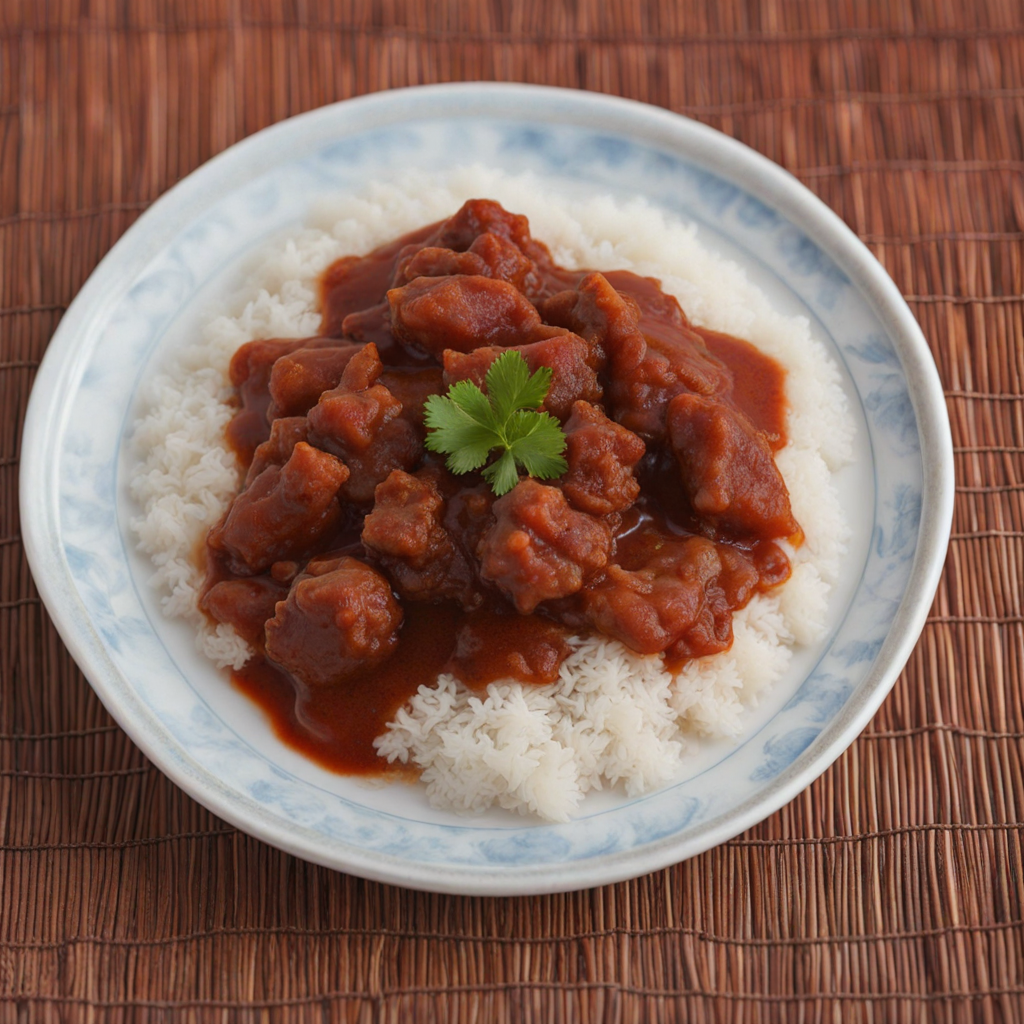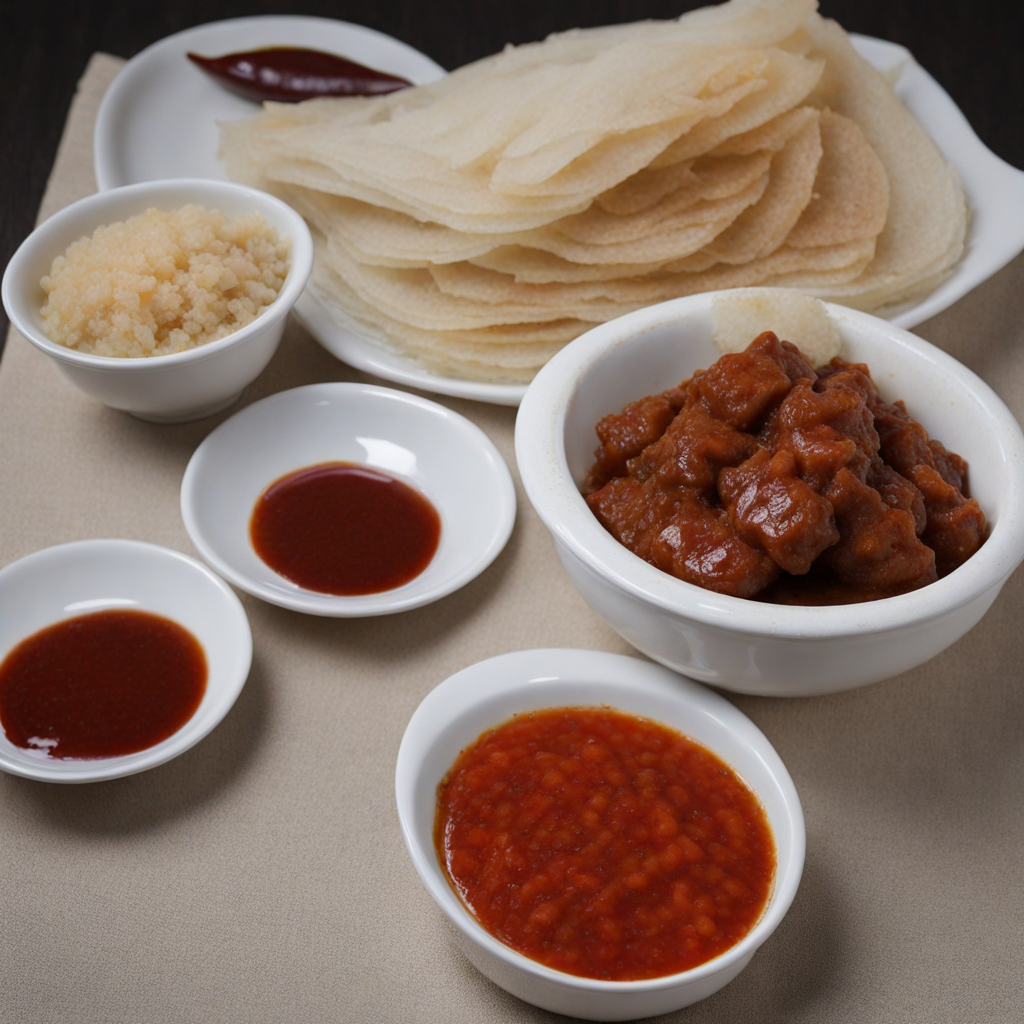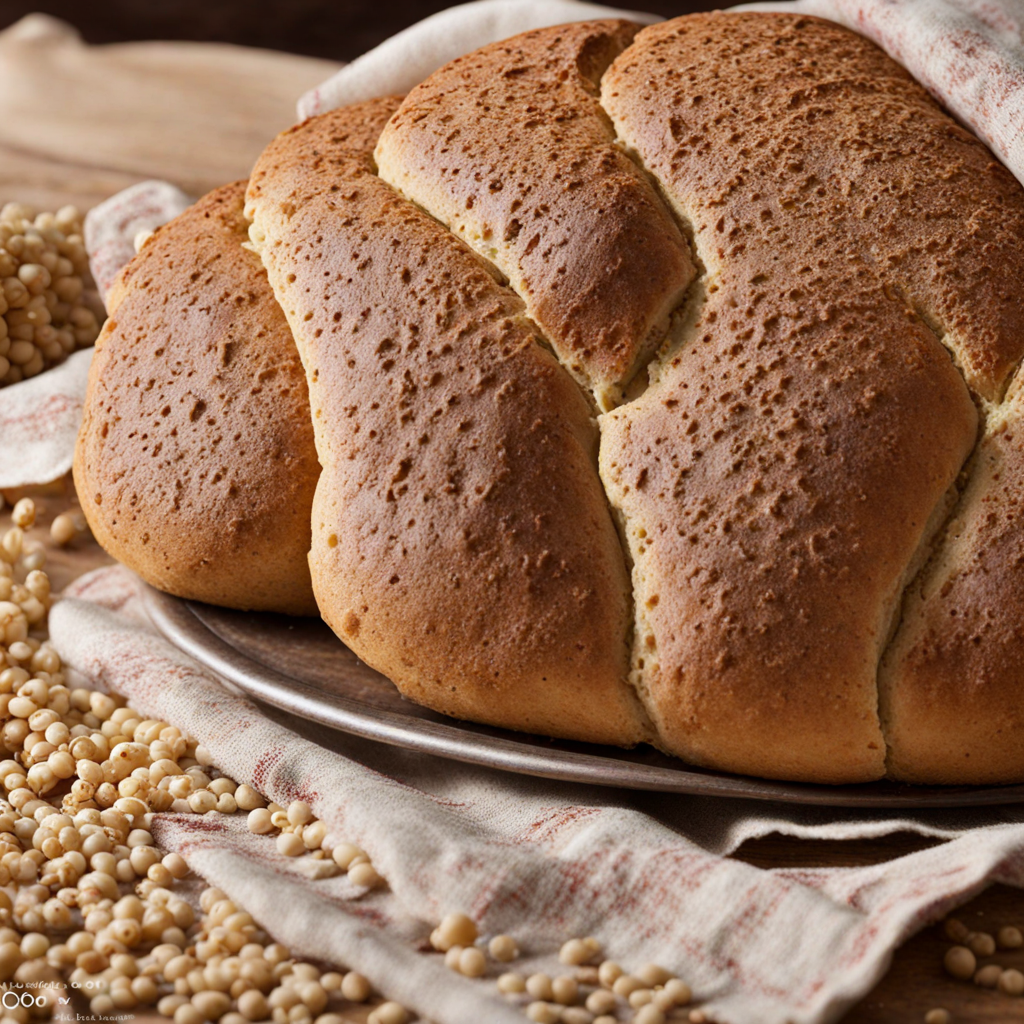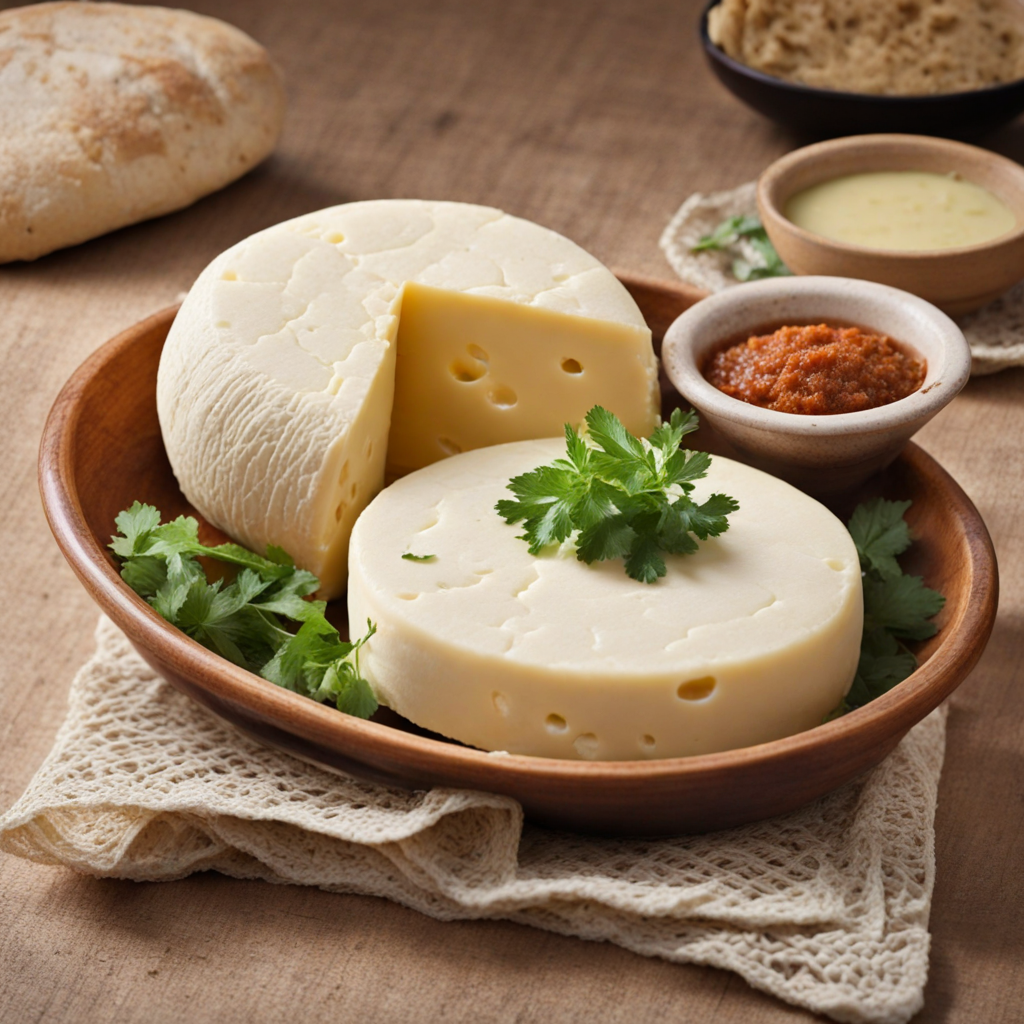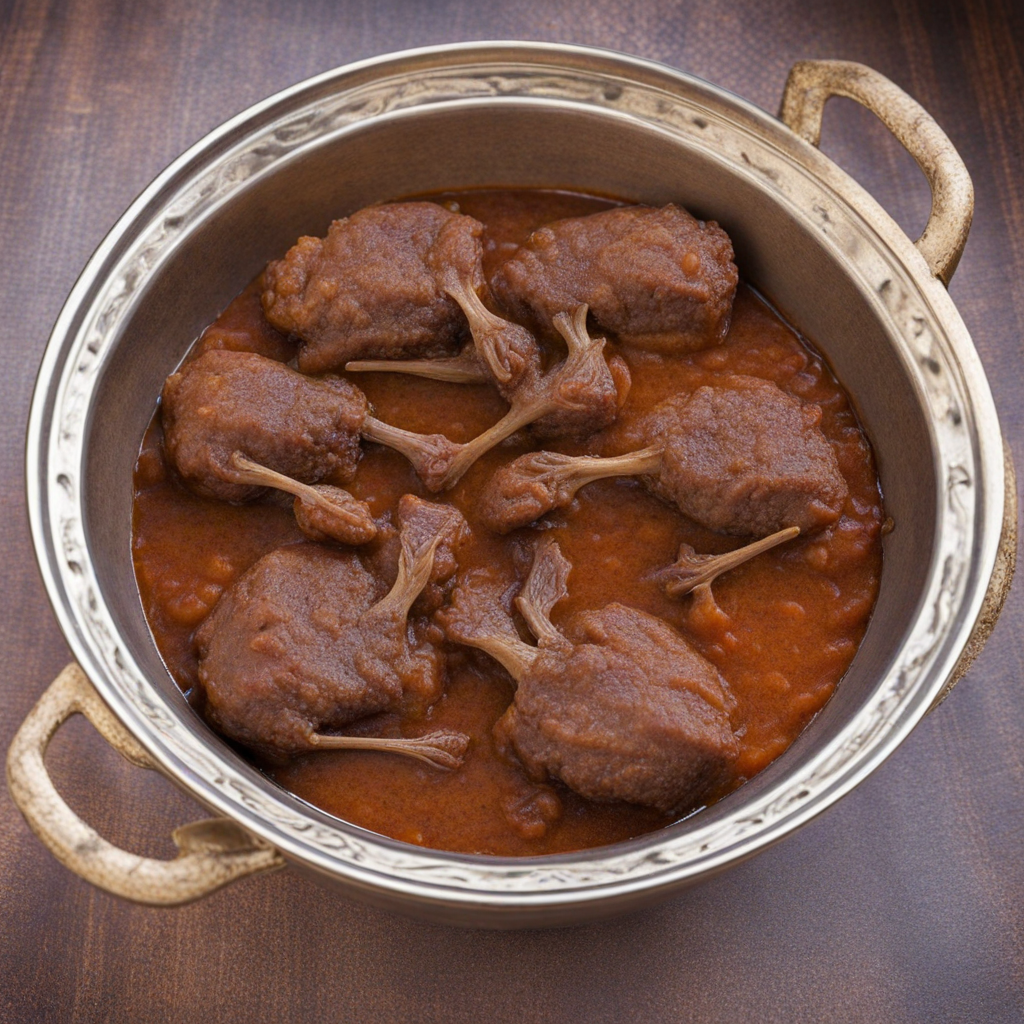Hilu Mur
Hilu Mur is a traditional Sudanese dish that beautifully showcases the rich culinary heritage of the region. This dish is primarily made from soft, tender pieces of meat, often lamb or beef, which are marinated and slowly cooked to perfection. The meat is infused with a blend of aromatic spices, including cumin, coriander, and a hint of chili, providing a tantalizing depth of flavor that is both comforting and invigorating. The cooking process often involves a slow simmer, allowing the spices to meld with the meat's natural juices, creating a hearty and satisfying dish that is perfect for sharing with family and friends. Accompanying the meat in Hilu Mur is a vibrant sauce that incorporates elements such as ground sesame seeds, tomatoes, and sometimes a splash of lemon or tamarind for acidity. This sauce is not only flavorful but also adds a delightful creaminess that contrasts wonderfully with the tender meat. The dish is typically served over a bed of fluffy, steamed rice or alongside traditional Sudanese flatbreads, which serve as the perfect vessel for scooping up the delicious sauce and meat combination. The balance of textures and flavors makes each bite a delightful experience, inviting you to savor every moment. Hilu Mur is more than just a meal; it embodies the warmth and hospitality of Sudanese culture. Often enjoyed during special occasions or gatherings, this dish brings people together, fostering a sense of community and celebration. The vibrant colors and aromatic spices make it a feast for both the eyes and the palate, inviting adventurous eaters to explore the unique tastes of Sudanese cuisine. Whether enjoyed at a family gathering or a local restaurant, Hilu Mur is a dish that promises to leave a lasting impression and a desire for more.
How It Became This Dish
The History of حلو مر (Halaw Mer) from Sudan Introduction Sudanese cuisine is a rich tapestry woven with the threads of diverse cultures, historical influences, and regional ingredients. Among its many treasures, one dish stands out for its uniqueness and cultural significance: حلو مر (Halaw Mer). This traditional sweet delicacy, often enjoyed during festive occasions and gatherings, represents not just a culinary delight but also a symbol of Sudanese identity and heritage. Its history is a reflection of the broader socio-cultural dynamics of Sudan, blending indigenous practices with influences from neighboring regions and historical trade routes. Origins of حلو مر Halaw Mer, which translates to "sweet bitter" in Arabic, has roots that trace back to the agricultural practices of ancient Sudan. The dish primarily features dates, a staple fruit in Sudanese agriculture, known for their nutritional value and natural sweetness. Dates have been cultivated in the region for thousands of years, making them one of the oldest cultivated crops. Furthermore, the use of sesame seeds, another key ingredient in Halaw Mer, dates back to ancient times in Africa, where they were prized for their oil and flavor. The preparation of Halaw Mer typically involves grinding roasted sesame seeds into a fine paste, mixing it with date paste, and sometimes flavoring it with spices such as cardamom. This combination not only enhances the flavor but also reflects the resourceful use of local ingredients, showcasing the region's agricultural bounty. The dish is often molded into small, bite-sized shapes, making it easy to share and enjoy during communal meals. Cultural Significance Halaw Mer holds a special place in the hearts of Sudanese people, often served during significant life events such as weddings, religious celebrations, and family gatherings. Its preparation and consumption are deeply embedded in the social fabric of Sudanese life. For many, making Halaw Mer is a communal activity, involving family members and friends who come together to create this traditional sweet. This collaborative spirit embodies the Sudanese value of hospitality and sharing, reinforcing bonds within communities. Furthermore, Halaw Mer is often associated with the month of Ramadan, a time of fasting and spiritual reflection for Muslims. During this holy month, the dish is prepared in abundance to break the fast, serving as a symbol of abundance and gratitude. The combination of dates and sesame not only provides essential nutrients after a day of fasting but also evokes a sense of comfort and familiarity during a time of spiritual renewal. Historical Development As with many traditional foods, the history of Halaw Mer is not static; it has evolved over time, influenced by external factors such as trade, migration, and cultural exchange. The geographical position of Sudan at the crossroads of Africa and the Arab world has facilitated the exchange of culinary practices and ingredients. For instance, the introduction of spices like cardamom and cinnamon, which are not indigenous to Sudan, can be attributed to trade routes connecting the Sudanese region with the Arabian Peninsula and beyond. During the 19th century, Sudan experienced significant political and social changes, particularly during the Mahdist Revolution and subsequent British colonial rule. These shifts impacted food production and consumption patterns. The British influence introduced new agricultural practices and crops, but traditional foods like Halaw Mer persisted, showcasing the resilience of Sudanese culinary traditions. In many ways, Halaw Mer became a symbol of national identity, representing a connection to the past amidst the rapid changes of the modern era. In contemporary Sudan, Halaw Mer continues to thrive, albeit with some adaptations. The availability of modern kitchen appliances has made the preparation process easier, and creative variations have emerged, incorporating ingredients like coconut or chocolate. These innovations reflect the dynamic nature of Sudanese cuisine, where tradition meets modernity. Despite these changes, the essence of Halaw Mer remains unchanged, serving as a reminder of the rich agricultural history and cultural heritage of Sudan. Halaw Mer Today In recent years, there has been a resurgence of interest in traditional Sudanese foods, driven by a growing awareness of the importance of cultural heritage and local ingredients. Halaw Mer, with its simple yet satisfying composition, has gained popularity not only in Sudan but also among the Sudanese diaspora around the world. As Sudanese communities settle in various countries, they bring their culinary traditions with them, sharing dishes like Halaw Mer to maintain a connection to their roots. Culinary festivals and cultural events celebrating Sudanese heritage have also contributed to the resurgence of Halaw Mer. These platforms provide opportunities for both Sudanese and non-Sudanese individuals to experience the flavors of Sudan, fostering greater appreciation for its cuisine. Additionally, social media has played a pivotal role in promoting traditional dishes, with food enthusiasts sharing recipes and stories about Halaw Mer, thus keeping the tradition alive for future generations. Conclusion Halaw Mer is more than just a sweet treat; it is a reflection of Sudan's rich culinary history and cultural identity. From its ancient origins rooted in agriculture to its contemporary adaptations, Halaw Mer has remained a beloved symbol of community, hospitality, and resilience. As Sudan continues to navigate the complexities of modern life, the enduring appeal of Halaw Mer serves as a reminder of the importance of cultural heritage and the unifying power of food. In a world increasingly influenced by globalization, Halaw Mer stands as a testament to the beauty of local traditions and the stories they carry. Whether enjoyed during festive occasions or as a comforting treat shared among loved ones, Halaw Mer encapsulates the essence of Sudanese hospitality and the rich flavors of its history, ensuring that this delightful dish will continue to be cherished for generations to come.
You may like
Discover local flavors from Sudan


